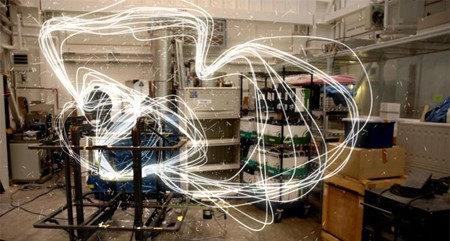On the latest episode of Systm, they talk to [David Calkins], founder of the RoboGames competition, about humanoid robotics. The robots featured in the episode are Hitec’s ROBONOVA-I. The ROBONOVA is about a foot high and has 16 servos with support for up to 24, all connected to an Atmel controller. The episode is quite long: At around 15 minutes, they demonstrate the programming enviroment. You can program it traditionally or pose the bot to work out the motions. At 30 minutes, [David] mentions that next year’s competition will allow airsoft weapons to be attached, but bots have to be controlled from a first person perspective. If you’re interested in one of these kits, they have a ROBONOVA special of $900 or as low as $500 for educational institutions (that’s us, right?). Now is the perfect time to get one since you’ll have nearly a full year to prepare for RoboGames.
Related: You’ll hear builder [Matt Bauer]’s name mentioned several times.
[via BotJunkie]












